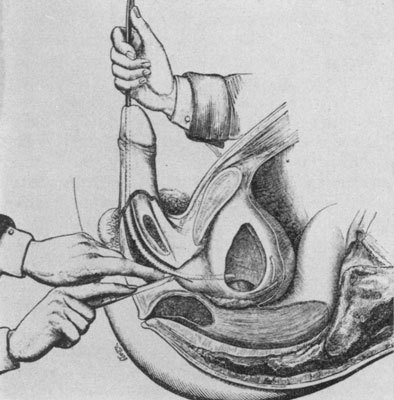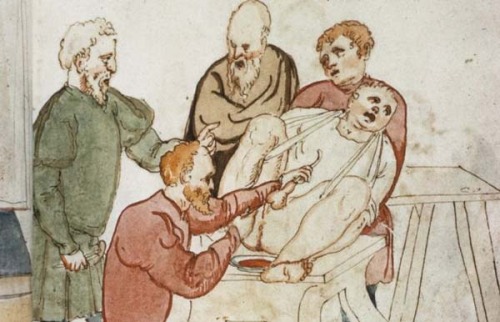How to Remove a Kidney Stone in the Middle Ages,During the Middle Ages up to around 19th century, ad
How to Remove a Kidney Stone in the Middle Ages,During the Middle Ages up to around 19th century, administration of medicine was left to all sorts of weird people, from learned physicians, to sketchy barber surgeons, to the village wise woman, to a wide variety of quack healers and doctors. One forgotten member of Medieval medical profession was the lithotomist, a traveling surgeon who specialized in removing kidney stones. For most, small stones could be easily, but painfully urinated out. However for those who could not pass a stone, it became obvious that the stone would have to be removed surgically, a terrorizing and agonizing prospect for both kings and commoners alike. Since kidney stones are not as common as other ailments, a lithotomist tended to be traveling physicians who would journey from town to town in order to ply his trade. He would take all of his equipment with him and was usually accompanied by an assistant, usually a young apprentice. Unlike other medical professionals of the day, a lithotomist probably did know what he was doing, being specialized in one type or surgery using tried and true methods dating to ancient Greece, India, or the Middle East. However, surgery before the invention of anesthetics was terribly painful, and there was no concept of “sterile technique” as it would be hundreds of years before the germ theory was first proposed. Many a kidney stone suffering patient died in agony on the lithotomist’s table, a fact that caused many to avoid treatment.To begin the surgery, the patient was placed in “lithotomy position”, a position used in childbirth today with the legs up and nether regions exposed to the air. Sometimes a lithotomist might have a special table with leg stirrups, but if not a couple of villagers might be recruited to hold the patient’s legs. A couple of other strong blokes may also be needed to restrain the patient. Once in position, a hollow metal catheter was inserted into the urethra to empty the bladder of urine. The catheter was also used to probe the bladder for the position of the stone, and acted as a way to manage the penis so it did not get in the way of the surgery. Once this was accomplished the lithotomist either made an incision below the scrotum into the bladder, or went into the anus, through the colon into the bladder, depending on the position of the stone. Surgery on female patients typically needed to be done through the vaginal canal as the pubic bone prevented the lithomist from making any other incisions. Once the opening was made, the lithotomist would fish out the offending stone, stitch up the incisions, and bloodlet the patient to insure he or she didn’t get an infection.A crude and terribly invasive procedure, patients might suffer permanent damage to the bladder or urethra. In addition, the absence of antibiotics combined with a lack of cleanliness increased the risk of infection. For centuries the technique of removing kidney stones pretty much stayed the same. Then in the 18th and 19th centuries innovative physicians developed new and less invasive ways to remove kidney stones. In the 18th century surgeons found ways to remove stones using incisions below the naval rather than way down under. In the 19th century, surgeons invented the “lithotripsy”, where they either inserted a tool into the urethra or a small incision, then crushed the stone rather than removing it altogether.Today, with modern medicine and modern anesthetics, the removal of kidney stone isn’t anywhere close to as horrifying as what our medieval ancestors faced. Today, doctors can even use a method called ESWL, a form of lithotripsy where high frequency sound waves are used to crush the stone. Ain’t we got it lucky? -- source link
Tumblr Blog : peashooter85.tumblr.com
#history#medicine#health care#surgery#middle ages#ouch#painful#kidney stones#lithotomy#lithotripsy



